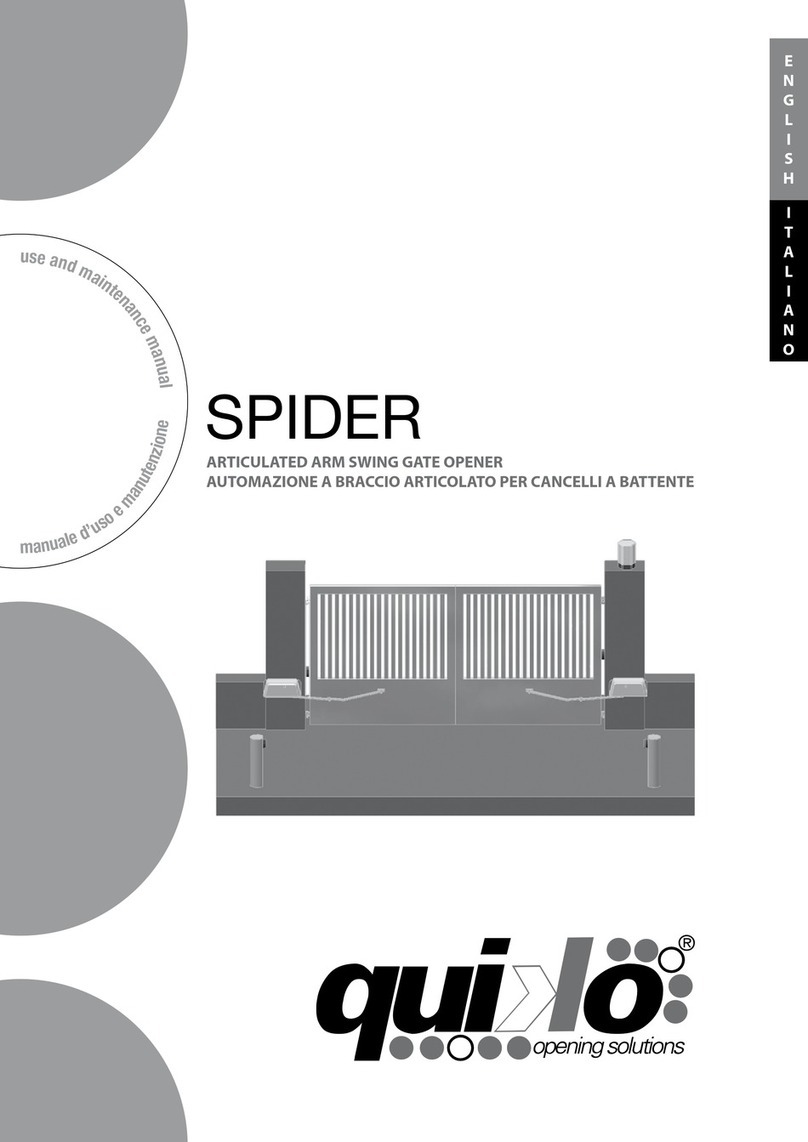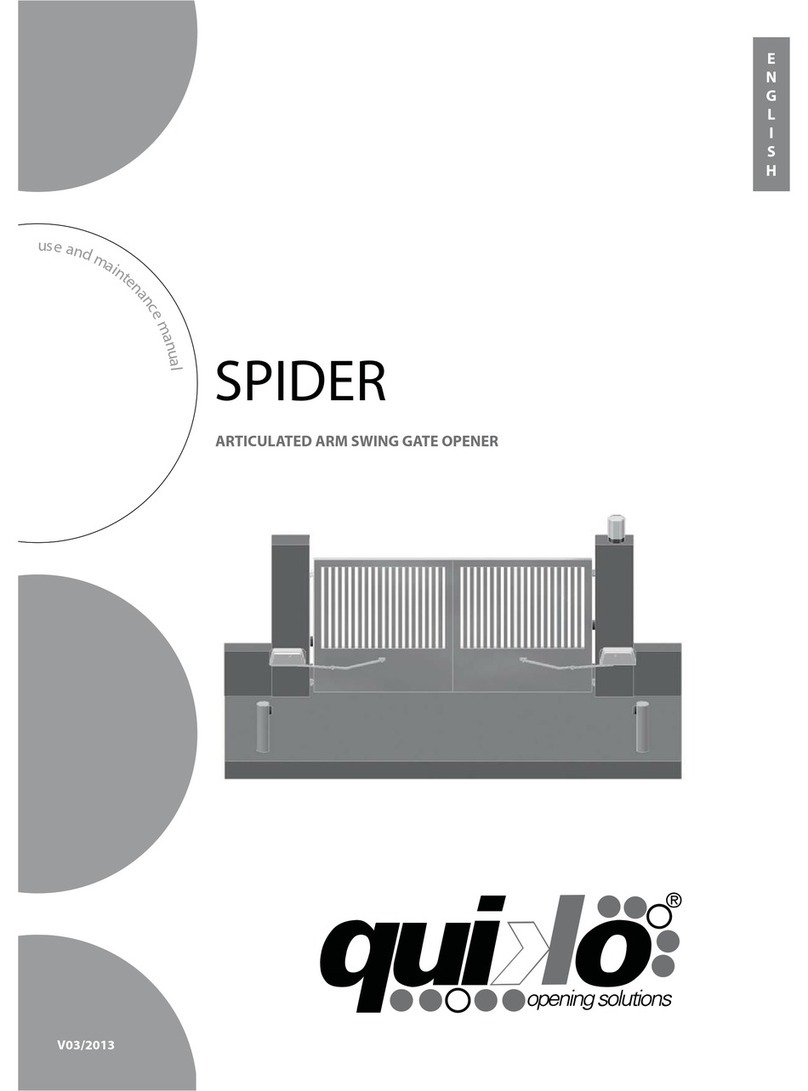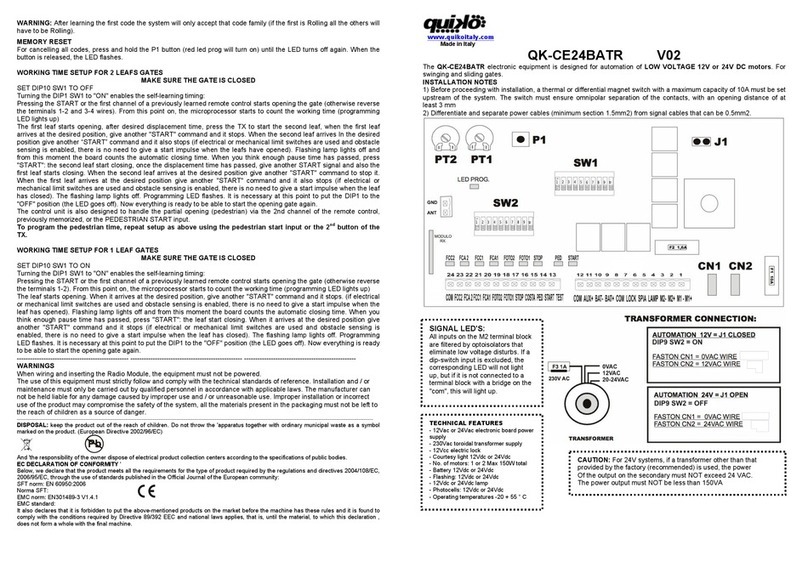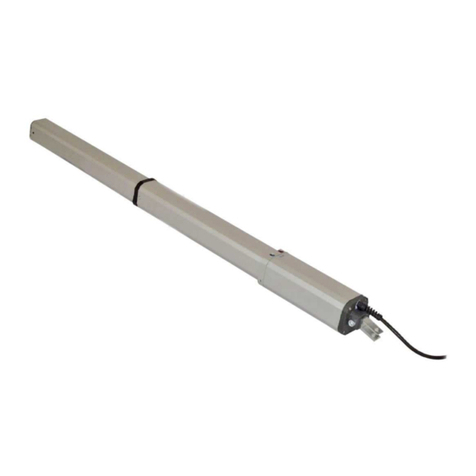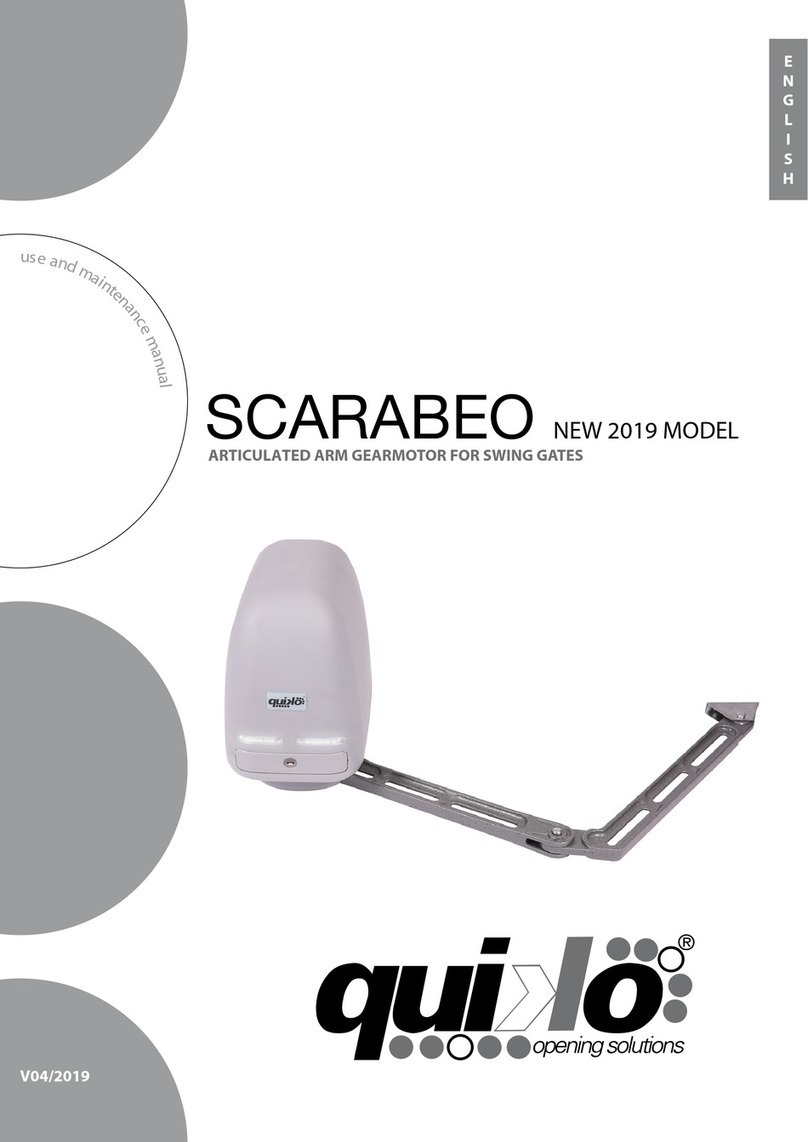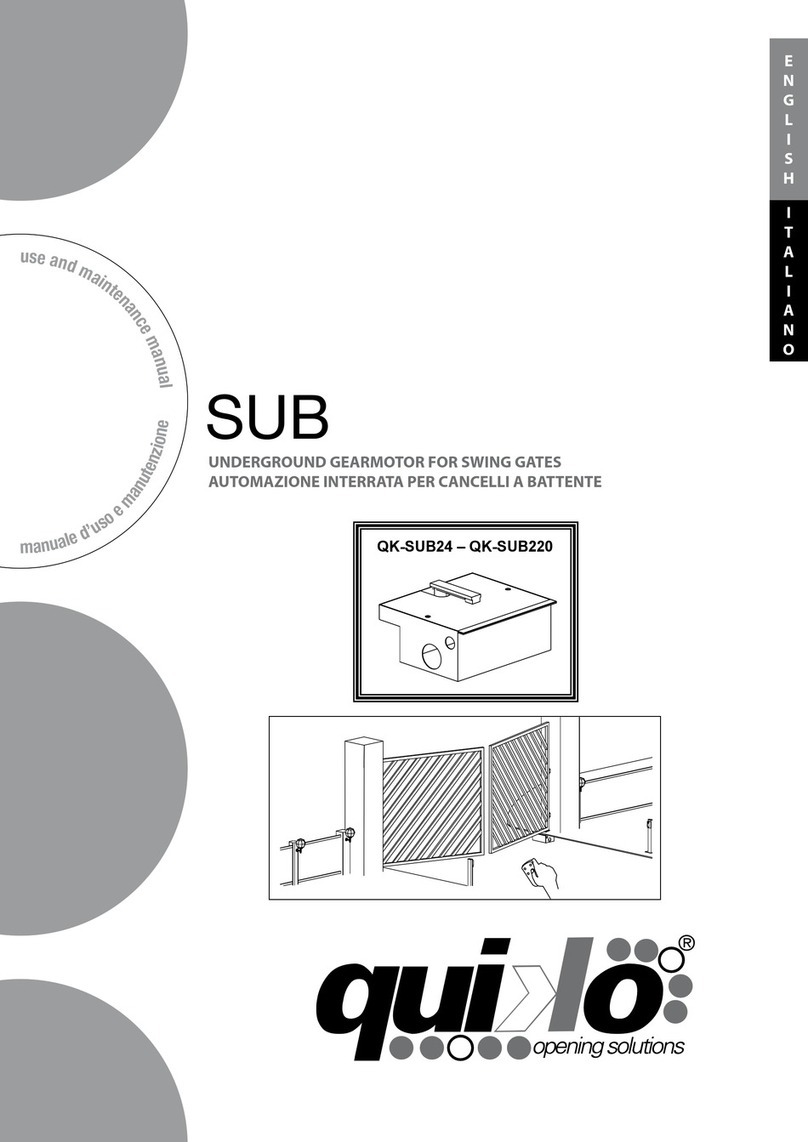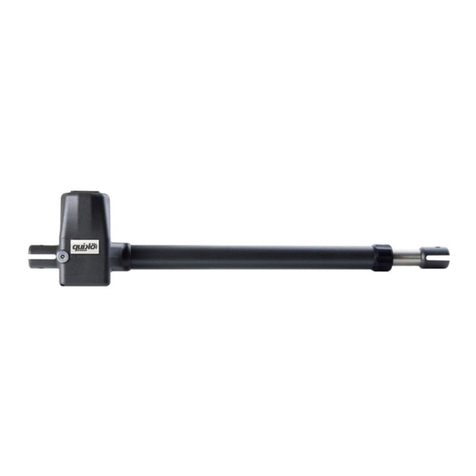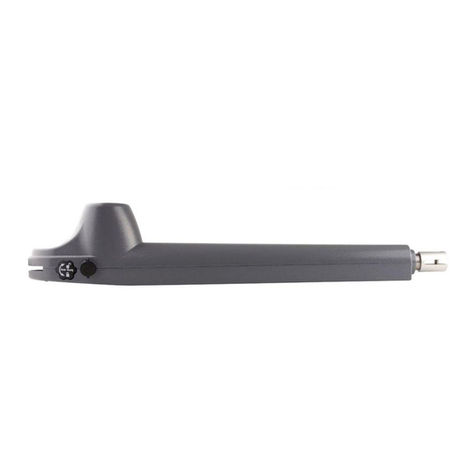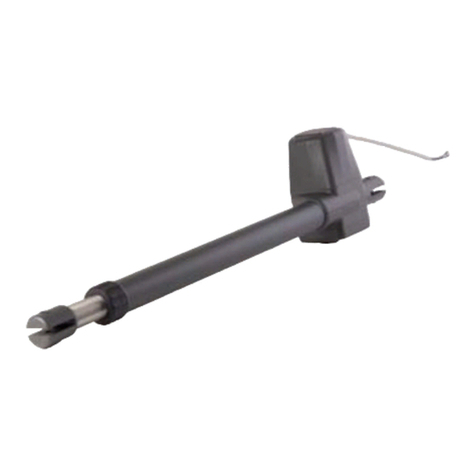4.1. SETTING ANTI-TRAP (fig.9)
4.3. AUTOMATISM TEST
5.2. AUTOMATED SYSTEM RESET
ENGLISH
4. ANTI-CRUSHING CONTROL SYSTEM
- FINAL OPERATIONS - TEST AUTOMATION
The hydraulic operators have a security anti-trap for
to control the hydraulic operator force, in the presence of an
obstacle during the movement of the gate.
The force is adjusted as follows:
- slide to unlock and lift the cap
- lift the base of the release
- to act on the control valves:
1) valve "A" to adjust the opening force
2) valve "B" to adjust the closing force
3) valve "C" to unlock it completely.
Turning the valve clockwise to increase torque, and
counterclockwise to decrease the torque.
The adjustment of the torque limiters,in EU member states,is
subject to standards EN 12445 and EN 12453.
In the other states is subject to local regulations.
4.2. FINAL OPERATION
After the adjusting anti-trap, follow these steps:
- close the device of the release
- remove the vent screw (Fig. 10).
After installation proceed with care to the test for verification
the automation functionality and all the accessories
connected with particular attention to security devices.
Give the "User Guide" to customer and explain the correct use
of the automated system and highlight areas of potential
danger from it.
5. MANUAL OPERATION AND RESET
5.1. MANUAL OPERATION
In case is necessary to manually operate the gate for absence
of electric tide or damage of the automation, you must be acted
on the device of unblocking as it follows:
- to open the cork of coverage unblocking and to insert the
special key in endowment;
- to rotate the key counterclockwise sense for to unlock;
- to effect manually the manoeuvre opening or closing of the
gate.
Before proceeding to the reset of the automated system, after
manual unblocking, it is advisable to disconnect the power
supply of the automatism, with the purpose to avoid that an
unintentional impulse can operate the automation.
The reset operation must be effected as it follows:
- to rotate the key of unblocking counterclockwise sense up to
the arrest;
- to close again the cork of coverage of the unblocking system;
- to insert again the power supply of the automation;
- to start the automation.
6. MAINTENANCE AND REPAIR
6.1. MAINTENANCE
In case of oil topping up must be strictly used Total oil
52-AT42
Periodically check the proper adjustment of the anti-crushing
safety (valve regulating power) and efficiency of the release
system.
The functional verification of the plant is recommended every
six months, with particular attention to the efficiency of the
safety devices and unblocking, included the verification of the
thrust force of the hyfraulic operator; it is also well to verify the
degree of functionality of the hinges of the gate.
Check the level oil inside the oil tank.
6.2. REPAIR
The possible reparations on the automation must be effected
exclusively from specialized personal, possibly authorized.
To use original spare parts.
7. TROUBLESHOOTING
Gate not moving
Gate moving slowly
Gate moving to tears
Oil leakage from the vent screw
Stop leaves at slow down
Rod stroke variable speed
- control power supply
- check that the operator is released
- check adjustment anti-crushing system
- check oil level in the tank
- check efficiency capacitor
- check efficiency of the electronic control unit.
- check adjustment anti-crushing system
- Verify the removal of the bleed screw oil
- to eliminate possible air in the hydraulic circuit,
effecting complete cycles of opening
and closing of the gate
- It is normal for a minimum initial oil leakage,
if theoil leakage is continuing, verify the perfect
horizontal position of the hydraulic operator.
Otherwise, contact an authorized personal.
- check adjustment anti-crushing system
- to verify the quotas of the angle opening
olio
Fig. 9
A
B
apertura
chiusura
Release control valve fully open
Control valve
closing force
Control valve
opening force
Oil distributor
Fig. 10
Oil vent screw
